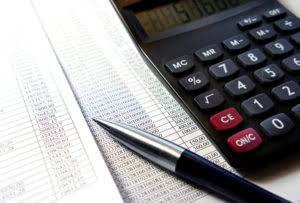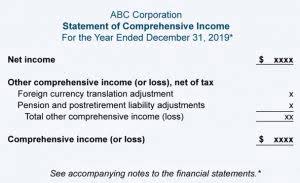Debt To Equity Ratio D
Content

A business with a high debt to asset ratio is one that could soon be at risk of defaulting. It also increases the probability of receiving a much higher interest rate or being rejected altogether if your organization needs to borrow more money. Understanding the debt to asset ratio is a key part of a company staying afloat financially. It tells you how well a business is performing financially and if it can afford to continue or needs revaluation. The debt to asset ratio creates a picture of the debt percentage that makes up an asset portfolio. In this article, you will learn how to calculate the debt to asset ratio and what those results mean for your business. A ratio less than 1 indicates that your company owns more assets than liabilities, making an investment in your company a less-risky venture.
Because equity is equal to assets minus liabilities, the company’s equity would be $800,000. Its D/E ratio would therefore be $1.2 million divided by $800,000, or 1.5. What counts as a “good” debt-to-equity (D/E) ratio will depend on the nature of the business and its industry. Generally speaking, a D/E ratio below 1.0 would be seen as relatively safe, whereas ratios of 2.0 or higher would be considered risky. Gearing ratios focus more heavily on the concept of leverage than other ratios used in accounting or investment analysis. This conceptual focus prevents gearing ratios from being precisely calculated or interpreted with uniformity.

If the ratio is higher, the lenders will have interference in the management as they have a higher stake in the business. Debitoor accounting and invoicing software gives you the tools to run your business from anywhere, at any time with access from one account across all of your devices. Lenders also check your past records and installment payments to ensure you actively repay your debts. But if you are in an industry that accepts payment upfront, your ratio may indicate a higher risk. Are greater than the actual revenue growth generated by the company, stock prices can and often do fall. Debt costs aren’t all the same and will often vary based on specific market conditions. With that said, it may not always be obvious that unprofitable borrowing is taking place.
What Is Considered A High Debt
The debt-to-equity (D/E) ratio is used to evaluate a company’s financial leverage and is calculated by dividing a company’s total liabilities by its shareholder equity. It is a measure of the degree to which a company is financing its operations through debt versus wholly owned funds.
All the information for calculating the debt-to-asset ratio can be found on a company’s balance sheet. The Liability section lists all the company’s liabilities and long-term debt and totals for both assets and liabilities are indicated. If debt to assets equals 1, it means the company has the same amount of liabilities as it has assets. A company with a DTA of greater than 1 means the company has more liabilities than assets.
Bankrate.com does not include all companies or all available products. Free Financial Modeling Guide A Complete Guide to Financial Modeling This resource is designed to be the best free guide to financial modeling! Stand out and gain a competitive edge as a commercial banker, loan officer or credit analyst with advanced knowledge, real-world analysis skills, and career confidence. Sage 50cloud is a feature-rich accounting platform with tools for sales tracking, reporting, invoicing and payment processing and vendor, customer and employee management. If you do choose to calculate your debt-to-asset ratio, do so on a regular basis so you can track any increases or decreases in your number and act accordingly.
Tax Calculators
This ratio is fluid across industries, so check the standards for your company as you begin financing big projects and growth strategies. Businesses with good debt to equity ratios are those that fall within the standard range for their industries. These companies are likely in a period of positive growth supported by balanced financing from both debt lenders and equity shareholders. calculate debt to asset ratio The debt-to-equity ratio compares the total debt balance on a company’s balance sheet to the value of its total shareholders’ equity. Also, the more established a company is, the more stable cash flows and stronger relationships with lenders it tends to have. As a result, larger and more mature companies can typically afford to have higher debt ratios than other industries.
On the other hand, lifestyle or service businesses without a need for heavy machinery and workspace will more likely have a low D/E. Since there are many ways to calculate the D/E ratio, it’s important to be clear about exactly which types of debt and equity are included in the calculation.
Times Interest Earned or Interest Coverage is a great tool when measuring a company’s ability to meet its debt obligations. When the interest coverage ratio is smaller than 1, the company is not generating enough cash from its operations EBIT to meet its interest obligations.
Firm HL, however, has a debt to equity ratio of 1.2 and pays 10 percent interest on its debt, whereas LL has debt to equity ratio of 0.7 and pays only 8 percent interest on its debt. This depicts that the company’s liabilities is only 40% compared to the company’s stockholders. This indicates that the company is taking little debt and thus has low risk. If the debt to equity ratio is 100%, it means that total liability is equal to total equity, thus, when you compute the debt to asset ratio, the answer will be 50%. However, if the answer for the debt to equity ratio is more than 100%, it means that total liability is higher than the company’s capital or total equity.
How Do The Current Ratio And Quick Ratio Differ?
Get clear, concise answers to common business and software questions. Product Reviews Unbiased, expert reviews on the best software and banking products for your business. Best Of We’ve tested, evaluated and curated the best software solutions for your specific business needs. Creditors get concerned if the company carries a large percentage of debt.
Debt to equity ratio is a long term solvency ratio that indicates the soundness of long-term financial policies of a company. It shows the relation between the portion of assets financed by creditors and the portion of assets financed by stockholders. As the debt to equity ratio expresses the relationship between external equity and internal equity (stockholder’s equity), it is also known as “external-internal equity ratio”.

On the other hand, Company B has a much higher ratio, which indicates it is in a much risker situation since its liabilities exceed its assets. An increasing trend indicates that a business is unwilling or unable to pay down its debt, which could indicate a default at some point in the future and possible bankruptcy. She adds together the value of her inventory, cash, accounts receivable, and the result is $26,000. Christopher should seek immediate action towards remedying the situation, such as hiring a financial advisor to help. If he doesn’t do anything to alter the trajectory of his company’s finances, it will go bankrupt within the next couple of years. Thirty-plus years in the financial services industry as an advisor, managing director, directors of marketing and training, and currently as a consultant to the industry. As you can see, Ted’s DTA is .5 because he has twice as many assets as liabilities.
Debt To Assets Ratio
Creditors usually like a low debt to equity ratio because a low ratio is the indication of greater protection to their money. But stockholders like to get benefit from the funds provided by the creditors therefore they would like a high debt to equity ratio.
- The debt-to-equity ratio (D/E) is calculated by dividing the total debt balance by the total equity balance, as shown below.
- If your company’s ratio is far too high, losses can occur and your business may not be ready to handle the resultant debt.
- As an entrepreneur or small business owner, this ratio is used when applying for a loan or business line of credit.
- A leverage ratio indicates the level of debt incurred by a business entity against several other accounts in its balance sheet, income statement, or cash flow statement.
- The trend analysis of historical performance will show how the company has acquired and grown its assets and how its financial risk profile is evolving.
- The debt-to-equity ratio can be used to compare a company’s total debt to its shareholders’ equity.
You may be less of a risk because your customers owe you and you’re expecting a payment. Again, the debt-to-capital ratio can help you determine if you have too much business debt.
Stay Up To Date On The Latest Accounting Tips And Training
The debt-to-asset ratio indicates that the company is funding 31% of its assets with debt. Debt capacity refers to the total amount of debt a business can incur and repay according to the terms of the debt agreement. On the flip side, if the economy and the companies performed very well, Company D could expect to generate the highest equity returns due to its leverage. While the ratio is much more useful for larger businesses, it certainly doesn’t hurt to know the debt-to-asset ratio for your business. It can also be helpful to consistently track this ratio over a period of time in order to be aware of any trends.
The trend shows that businesses are growing thanks to a healthy balance of debt and equity. As the name suggests, the debt-to-asset ratio or total-debt-to-total-assets ratio is a debt ratio of a company’s total debts to its total assets, expressed as a decimal or percentage. The Debt-To-Asset ratio is a measure of Solvency and is determined based on information derived from a business’ or farm operations balance sheet. The term Solvency refers to the ability of a farm or business to pay all of its debt if it were to have to immediately sell the business or farming operation. The Debt-To-Asset ratio specifically measures the amount of debt the business or farm has when compared to the total assets owned by the business or farm.
If some of the firms use one inventory accounting method or one depreciation method and other firms use other methods, then any comparison will not be valid. A solvency ratio is a key metric used to measure an enterprise’s ability to meet its debt and other obligations. Analysts are not always consistent about what is defined as debt. For example, preferred stock is sometimes considered equity, but the preferred dividend, par value, and liquidation rights make this kind of equity look a lot more like debt. However, even the amateur trader may want to calculate a company’s D/E ratio when evaluating a potential investment opportunity, and it can be calculated without the aid of templates.
Negative debt to equity ratio can also be a result of a company that has a negative net worth. Companies that experience a negative debt to equity ratio may be seen as risky to analysts, lenders, and investors because this debt is a sign of financial instability. A high debt to equity ratio indicates a business uses debt to finance its growth. Companies that invest large amounts of money in assets and operations often have a higher debt to equity ratio. For lenders and investors, a high ratio means a riskier investment because the business might not be able to produce enough money to repay its debts.
Total-Debt-to-Total-Assets Ratio Definition – Investopedia
Total-Debt-to-Total-Assets Ratio Definition.
Posted: Sat, 25 Mar 2017 22:12:39 GMT [source]
That’s why higher debt ratio makes it more difficult to borrow money. Lenders often have debt ratio limits and do not extend credit to over-leveraged companies. The debt ratio is a finance ratio that represents the degree to which an entity has used debt to finance its assets by calculating the proportion of the entity’s assets that are financed through debt. A high debt to asset ratio signifies a higher financial risk, but in the case of a strong, growing economy, a higher equity return. When calculating this ratio, some may choose to subtract intangible assets from the total asset value. This is because it is unlikely that intangible assets were financed with debt . Calculating the ratio without intangibles included can also be a better gauge of a company’s actual ability to service its debt.
It is the ratio of total debt (long-term liabilities) and total assets (the sum of current assets, fixed assets, and other assets such as ‘goodwill’). The debt ratio formula can be used by the top management of the company to take the top-level decision of the company related to its capital structure and future funding. By using the Debt ratio, the top management can take a decision for raising funds. Whether they want to raise funds from external sources like loan or debts or through equity. If the company have enough capitals to repay its obligations, then they can raise fund from external sources. However, it’s most commonly utilized by creditors to determine a business’ eligibility for loans and their financial risk. Before handing over any money to fund a company or individual, lenders calculate their debt to asset ratio to determine their overall financial profile and capacity to repay any credit given to them.
It also gives financial managers critical insight into a firm’s financial health or distress. Rosemary Carlson is an expert in finance who writes for The Balance Small Business. She has consulted with many small businesses in all areas of finance. She was a university professor of finance and has written extensively in this area. Capital employed, also known as funds employed, is the total amount of capital used for the acquisition of profits. However, the D/E ratio is difficult to compare across industry groups where ideal amounts of debt will vary. Get up and running with free payroll setup, and enjoy free expert support.
Our priority at The Blueprint is helping businesses find the best solutions to improve their bottom lines and make owners smarter, happier, and richer. That’s why our editorial opinions and reviews are ours alone and aren’t inspired, endorsed, or sponsored by an advertiser. Editorial content from The Blueprint is separate from The Motley Fool editorial content and is created by a different analyst team. Accounting Accounting software helps manage payable and receivable accounts, general ledgers, payroll and other accounting activities.

